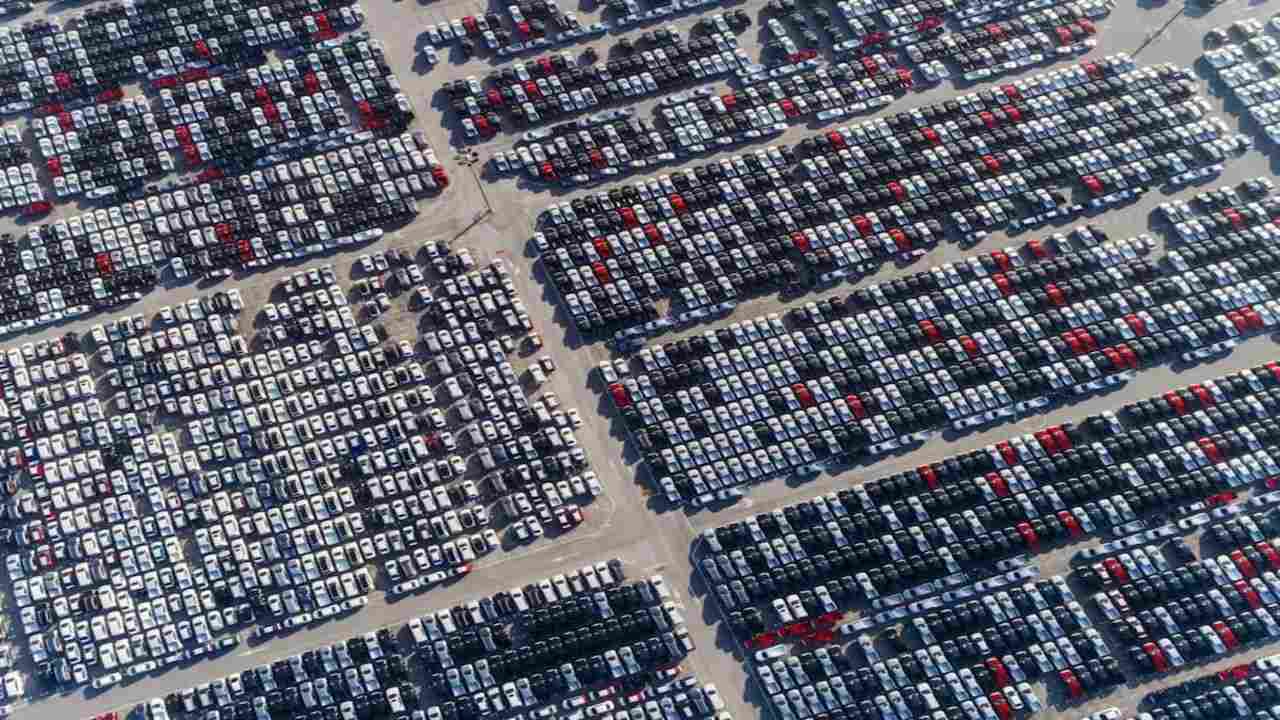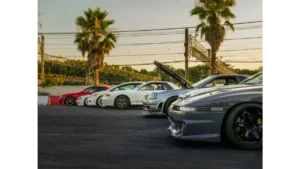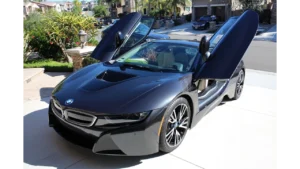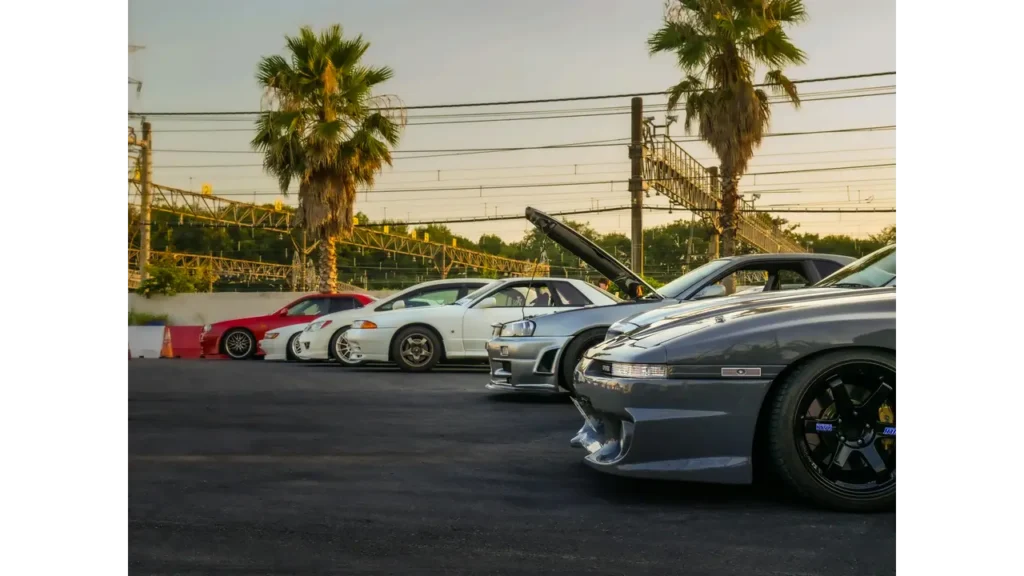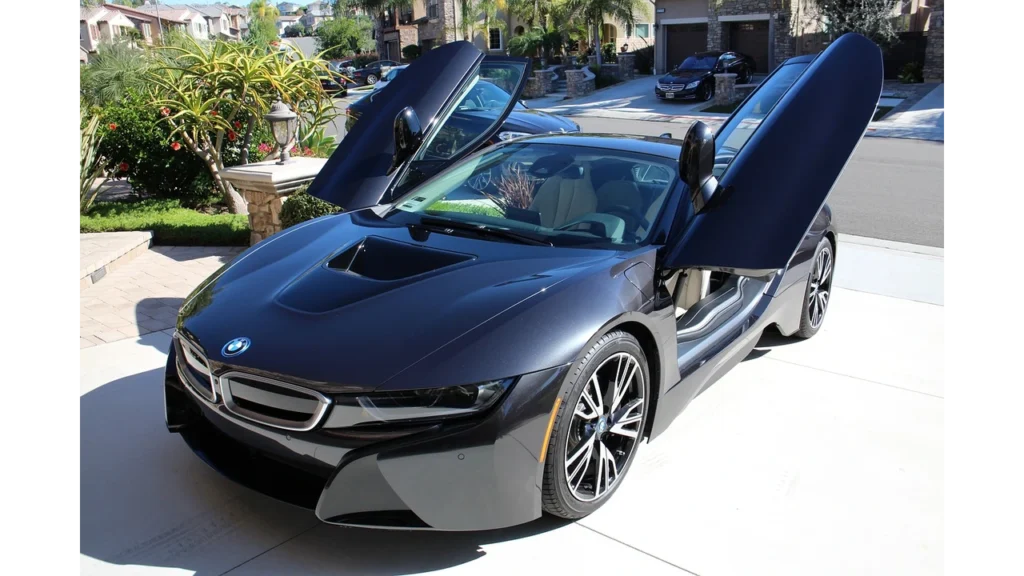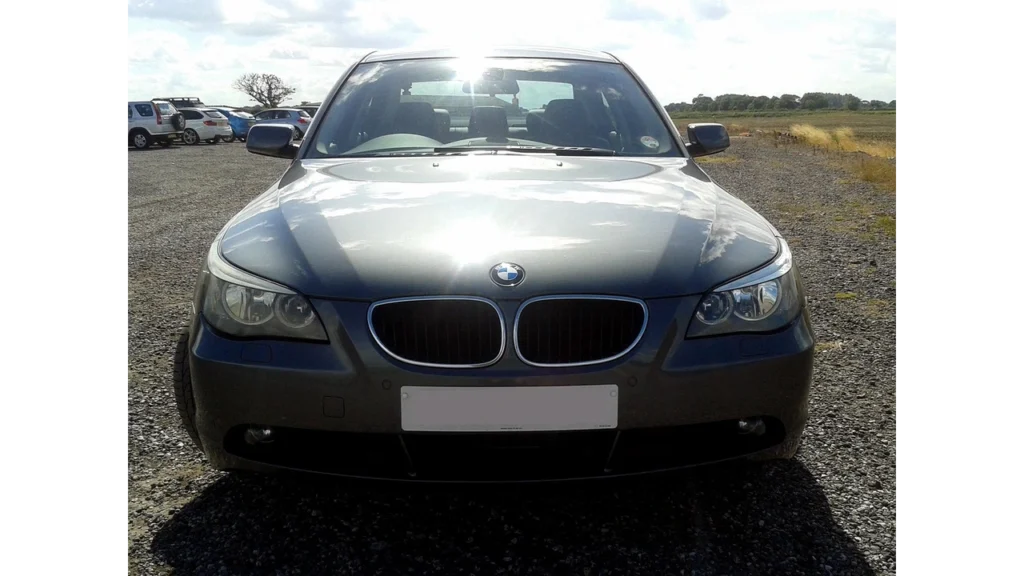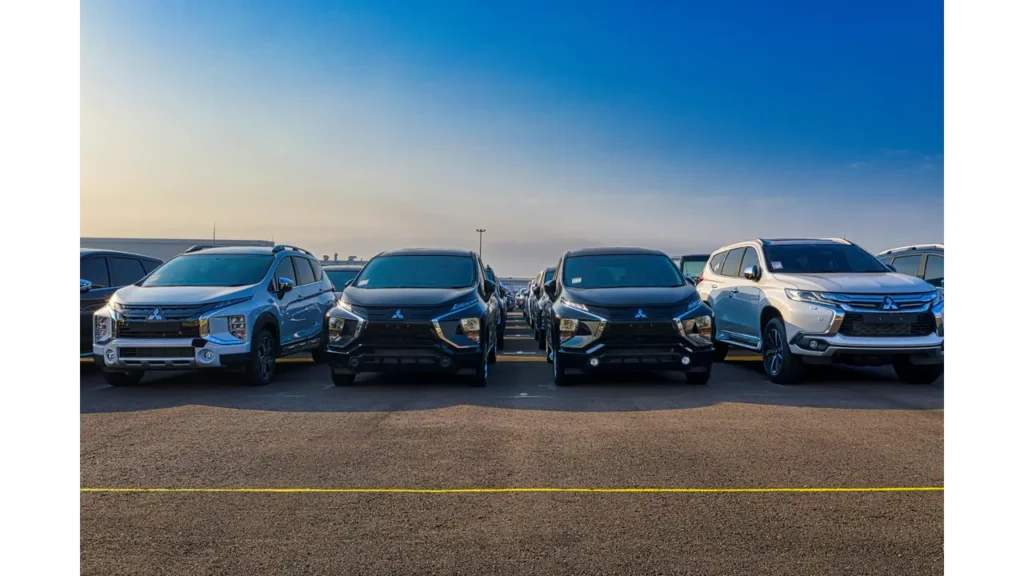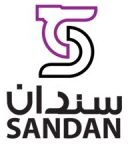Introduction & Context
Automobile workshops in Sandan serve as a key engine within Oman’s automotive economy. They are not merely repair centers—they are embedded components of a wider industrial ecosystem designed for long-term sector growth. Sandan Industrial City has positioned itself as a centralized automotive hub where workshops operate alongside showrooms, parts suppliers, logistics providers, and vehicle storage facilities. This co-location creates a seamless supply and service chain unmatched by standalone facilities elsewhere in the country.
What distinguishes Sandan is not just physical space, but functional zoning. Workshops here benefit from pre-installed utilities, cluster-specific planning, and dedicated infrastructure such as internal roads optimized for vehicle movement and access. Whether the operation is a basic two-bay mechanical shop or a full-scale body and paint facility with high-capacity spray booths, Sandan’s layout supports a diverse range of service models.
At the same time, Oman’s automotive landscape is evolving. With the rise of hybrid and electric vehicles, the service sector is under pressure to adapt. Workshops must now manage not only combustion engine diagnostics but also battery systems, advanced driver-assist systems (ADAS), and software-driven maintenance. In this environment, Sandan’s future-proof layout and integrated planning offer a real advantage.
This guide dissects every layer of automobile workshop operations within Sandan—from types of facilities and licensing pathways to financial structures, growth strategies, and future trends. It addresses investor-level concerns, operational best practices, and technical requirements, making it a practical resource for workshop owners, technicians, and automotive entrepreneurs alike.
Key Takeaways / TLDR
- Sandan is Oman’s leading integrated automotive zone, offering specialized infrastructure for workshops of all sizes and types.
- Workshop models in Sandan benefit from zoning efficiency, access to parts networks, and synergy with adjacent showrooms.
- The region’s shift toward EV servicing demands investment in new tools, technician training, and adaptable service models.
- This guide explains how to set up, operate, scale, and future-proof a workshop business inside Sandan.
Table of Contents
Typology & Services of Workshops in Sandan
Automobile workshops in Sandan can be classified by their core services, tooling complexity, and customer focus. While some specialize in mechanical maintenance, others target niche areas like collision repair, performance upgrades, or electric vehicle diagnostics. The city’s automotive clustering allows these services to operate independently or as part of a vertically integrated setup.
Mechanical & General Maintenance Workshops
These workshops focus on core vehicle health: oil changes, engine diagnostics, suspension adjustments, battery replacement, brake systems, and periodic servicing. Common equipment includes hydraulic lifts, OBD scanners, and torque tools. Facilities typically span two to four bays and are staffed by a mix of general technicians and specialized mechanics.
Paint, Body & Collision Repair
Workshops in this segment handle dent repair, full-body repainting, structural frame corrections, and post-accident restoration. Infrastructure needs are more demanding—spray booths with air filters, paint mixing rooms, welding stations, and temperature-controlled drying areas are essential. Facilities often require higher power loads and special ventilation.
EV & Hybrid Workshops
Electric vehicle maintenance introduces a new category of service. These workshops must manage high-voltage systems, battery diagnostics, regenerative braking calibration, and electric drivetrains. Tools include battery analyzers, insulated lift tables, and certified safety equipment. Few workshops in Oman are fully EV-ready, making this an area of growth potential.
Performance & Tuning Shops
These cater to car enthusiasts seeking custom exhausts, ECU remapping, turbo kits, or suspension upgrades. Layouts emphasize precision tooling and software calibration. Tuning shops often collaborate with motorsport teams or car clubs, creating revenue through both services and parts sales.
Detailing & Accessory Fitment
Offering cosmetic services such as ceramic coating, polishing, interior steam cleaning, and multimedia system installations, these shops require low structural investment but benefit from repeat customer engagement. Sandan’s foot traffic and proximity to showrooms make it ideal for accessory sales and light customization.
Sandan’s zoning supports each of these formats through modular units, shared access roads, and scalable power and waste infrastructure—enabling workshops to operate independently or in collaboration with showrooms and dealers.
Locating & Setting Up a Workshop in Sandan
Selecting the right plot within Sandan is the first strategic move in launching a workshop. The city’s master plan divides areas by sector, ensuring that vehicle-related services are concentrated along dedicated roads and within pre-configured industrial blocks. This layout benefits both workshop operations and customer flow.
Plot Selection & Zoning
Workshop owners must choose between single-use industrial plots or co-located units integrated with showrooms. Plots vary in frontage, depth, and loading access. Industrial units intended for mechanical or bodywork services must meet zoning rules around noise, chemical use, and waste management. Power availability, drainage design, and ventilation allowances should be evaluated during the selection phase.
Co-locating with Showrooms
Sandan encourages dual-use models where a showroom occupies the front-facing unit and the workshop operates from an attached or rear zone. This structure allows dealers to offer complete service cycles: display, sale, and post-sale support under one roof. It’s a growing trend, especially among used car dealers targeting value-conscious buyers who prioritize bundled servicing.
Three layout models dominate:
- Attached Workshop: Shared building envelope with separate entrances
- Adjacent Units: Two connected units leased jointly
- Integrated Facility: Unified service path from vehicle delivery to post-sale servicing
Infrastructure Requirements
Workshops in Sandan benefit from ready utility connections. Mechanical shops typically need:
- 3-phase power
- Compressed air lines
- Vehicle lifts installed on reinforced slabs
- Drainage channels with oil separators
Paint or detailing workshops require additional infrastructure such as filtered ventilation systems, temperature controls, and fire safety clearances. All units must conform to Sandan’s industrial safety codes, which align with Oman’s municipal and environmental regulations.
Parts Storage & Inventory
Facilities should include secure inventory zones for fast-moving parts, lubricants, and tools. Storage planning affects turnaround time and revenue. Some workshops integrate with adjacent suppliers within Sandan to minimize inventory and use just-in-time delivery.
Early coordination with Sandan’s planning office helps align workshop design with regulatory and infrastructure capabilities, reducing delays and cost overruns during setup.
Co-Locating with Showrooms: Pros & Layout Models
In Sandan, the co-location of automobile workshops with showrooms is not a trend—it’s a designed operational advantage. The city’s urban-industrial planning integrates sales and service under one environment, allowing businesses to offer full-cycle automotive solutions. This layout increases revenue per customer, reduces overhead, and provides a streamlined experience for vehicle buyers who want both sales and aftersales under one roof.
Operational Benefits of Co-Location
- Customer Retention: A buyer is more likely to return for servicing if the workshop is connected to the place of purchase. This builds loyalty and improves aftersales revenue.
- Operational Synergy: Shared infrastructure (waiting areas, staff rooms, parking, and entrances) reduces duplication and fixed costs.
- Cross-Promotion Opportunities: Workshops can upsell accessories, extended warranties, and service contracts at the point of sale. Conversely, a satisfied service customer might trade in their vehicle at the adjacent showroom.
- Shorter Turnaround Times: Internal vehicle movement from display to PDI (pre-delivery inspection) to aftermarket customization is faster and more secure than in separate facilities.
Layout Configurations Common in Sandan
- Attached Workshop Model
A shared structure divided into two operational zones. The showroom occupies the frontage with glass facades and customer interface. The rear section houses the service bays with separate access for vehicles. This model suits dealers offering routine service packages and accessory installations.
- Adjacent Plot Model
Two side-by-side units leased together. One functions as the showroom, the other as a full-capacity workshop. Ideal for multi-brand operators or those requiring larger repair zones. Allows more flexibility in workflow without compromising branding.
- Integrated Single-Use Building
This is common among larger operators. A single structure supports display, delivery, servicing, and even vehicle storage. Entry points are zoned for customers, service teams, and parts logistics. This layout works best for brands that handle fleets or have dealership-level operations.
Businesses entering Sandan’s automotive sector often choose co-location for scalability. Starting with a small showroom and adjacent workshop, they can expand vertically into more specialized services or horizontally by adding used car sales, detailing, or fleet management.
Infrastructure & Facility Requirements
An automobile workshop cannot function without well-matched infrastructure. In Sandan, operators have a logistical advantage thanks to standardized utility provisioning and flexible lot configurations. However, understanding the specific infrastructural needs based on the workshop type is critical during setup and operations planning.
Electrical Load and Power Management
- Standard workshops typically require three-phase power connections, with loads between 30 kW to 100 kW depending on equipment.
- Paint shops and high-capacity facilities may require custom power feeds and backup generators, especially if spray booths or heavy welding are involved.
- EV-focused workshops need high-voltage equipment zones, isolated power circuits, and battery charging setups with integrated cooling.
Compressed Air & Pneumatic Systems
- Most mechanical operations depend on compressed air lines for impact tools, lifts, and cleaning systems.
- A properly ventilated compressor room must be included in the layout, with noise insulation and fire-rated enclosures.
Ventilation & Temperature Control
- Body and paint operations must include active air filtration and exhaust systems that comply with municipal environmental standards.
- Detailing workshops benefit from climate-controlled zones to maintain product performance during application (e.g., ceramic coating, wrap installations).
Drainage, Oil Separation, and Waste Disposal
- Sandan requires all workshops handling oil, coolant, or other fluids to install oil separators and filtered drainage systems.
- Drainage points must be graded, covered, and periodically cleaned to prevent blockages or hazardous buildup.
Lighting & Safety Compliance
- LED lighting with shadowless illumination is required for accurate diagnostics and visual inspections.
- Emergency lighting, fire extinguishers, and smoke detectors must be installed per zone based on function (mechanical, chemical, storage).
Flooring & Load-Bearing Design
- Reinforced concrete floors are essential for lift installations and heavy vehicle handling.
- Epoxy or chemical-resistant surfaces are recommended for areas involving fluids, paints, or solvents.
Sandan’s infrastructure standards accommodate a wide range of workshop types, but compliance checks and pre-approval are mandatory before construction begins. Operators are expected to submit their infrastructure layout along with utility requirements and environmental management plans for evaluation.
Tooling & Technology Stack
Automobile workshops in Sandan vary in scale, but competitiveness increasingly depends on the quality and versatility of tooling. The shift from traditional repair methods to high-tech diagnostics, software-integrated service, and precision systems makes the tooling stack a core business investment.
Core Tools Across Most Workshops
- Hydraulic or pneumatic lifts (2-post, 4-post, scissor-type) for underbody access
- OBD-II scanners and diagnostic computers to read fault codes, reset systems, and monitor live data
- Wheel alignment and balancing machines, crucial for suspension and tire services
- Battery testers and multimeters, especially as vehicles transition toward hybrid and EV platforms
- Air compressors, used for tire inflation, pneumatic tools, and cleaning systems
- Tool trolleys and modular workbenches, organized by job type (electrical, mechanical, fabrication)
Advanced Equipment for Specialized Workshops
- Spray booths with temperature controls for collision repair facilities
- ADAS calibration systems for vehicles with driver-assist features (increasingly required post-accident)
- High-voltage insulation tools for EV diagnostics
- Dyno machines or engine simulators for tuning and performance-focused facilities
- Diagnostic software licenses from OEMs or third-party integrators (Bosch, Launch, Snap-On)
Digital Workshop Management Tools
- Job card systems and customer workflow software that track repairs, inventory, and communication
- Integration with CRM or dealer management systems for co-located businesses
- Mobile check-in and approval platforms, allowing customers to authorize work remotely and receive real-time updates
Tooling directly affects service capability and throughput. In Sandan, access to tool distributors and OEM channels is simplified due to the city’s automotive clustering. Some tenants even pool orders to benefit from bulk pricing or shared training sessions.
A high-functioning tool stack is not just a productivity asset—it is a trust signal. Well-equipped workshops attract fleet clients, dealership partnerships, and loyal consumers who associate tooling quality with service reliability.
Business Model & Financials
An automobile workshop in Sandan operates within a structured but flexible business environment. The diversity of service models—ranging from basic repairs to full-scale bodywork and EV diagnostics—means there is no single financial formula. However, all successful operations in Sandan share a focus on cost control, service diversification, and location-specific optimization.
Revenue Streams
Most workshops in Sandan earn through a mix of:
- Labor charges, typically billed per hour or per service package. Rates vary by technician skill, job complexity, and vehicle type.
- Parts markup, where margins are earned on consumables (filters, oils, brake pads) or specialty items (electrical components, sensors).
- Diagnostic charges, especially for high-tech vehicles requiring software-based troubleshooting.
- Accessory fitting and detailing services, which often carry higher margins due to low overhead and fast turnaround.
Sample Pricing Benchmarks (Based on Market Averages in Oman):
- Oil change with filter: OMR 10–20
- Full mechanical checkup: OMR 25–40
- Brake pad replacement: OMR 20–35
- Diagnostic scan: OMR 5–15
- Ceramic coating (per vehicle): OMR 90–200
Cost Structure
Workshops in Sandan typically incur:
- Fixed costs: rent or lease, utilities, technician salaries, insurance, and permits.
- Variable costs: spare parts procurement, consumables, outsourced labor (e.g., glass fitting), and waste disposal.
- Capital costs: equipment acquisition, infrastructure setup, and IT systems.
Break-even Scenarios
A two-bay mechanical workshop in Sandan with minimal structural customization might require:
- Initial investment: OMR 15,000–30,000
- Monthly operating costs: OMR 2,500–4,000
- Break-even timeline: 12–18 months, depending on location, specialization, and marketing
Service Contracts & Subscription Models
Fleet clients and corporate partnerships can stabilize revenue. Some workshops in Sandan offer:
- Preventive maintenance contracts billed monthly or quarterly
- Service bundles with upfront payment for periodic jobs
- Loyalty programs tied to adjacent showrooms
Well-designed financial models are critical in Sandan, where competition exists but is often stratified by service quality. Workshops that offer bundled value—such as detailing with diagnostics or free pickup for fleet accounts—tend to gain traction faster.
Compliance, Certification & Quality Assurance
Regulatory compliance is non-negotiable for operating any automobile workshop in Oman, particularly within structured zones like Sandan. Beyond baseline licensing, workshops must follow safety, environmental, and industry-specific quality standards that affect layout, operations, and business longevity.
Permits & Licensing Requirements
To operate within Sandan:
- A commercial license is required under Oman’s Ministry of Commerce and Industry (MOCI).
- A municipal approval must be obtained for zoning, activity classification, and public health compliance.
- Fire safety and hazardous material approvals must be granted by Civil Defense, especially for workshops dealing with flammable chemicals or high-voltage EV systems.
Specialized Certifications
- OEM Certification: Workshops aligned with specific brands (e.g., Toyota, Nissan) must meet tooling, layout, and process benchmarks to become authorized service providers.
- ISO 9001 or ISO 14001: Required for workshops seeking to work with international fleets, logistics partners, or large government contracts.
- EV-Specific Safety Certification: Technicians must be trained and certified in high-voltage safety protocols to handle electric vehicles.
On-site Quality Control Processes
Quality assurance includes:
- Standardized job cards and service checklists
- Pre- and post-inspection documentation
- Warranty-backed repairs with documented SOPs
- Use of OEM or approved aftermarket parts only
- Internal audits and technician performance reviews
Safety & Environmental Compliance
- Proper storage and labeling of oils, solvents, and chemicals
- Waste disposal contracts with certified vendors for hazardous waste
- PPE usage, first-aid kits, and clear signage for emergency exits
- Fire suppression systems based on workshop type (wet vs dry services)
Workshops that comply with certification and safety standards operate more securely and gain faster trust among high-value customers. In Sandan, where competitive clustering occurs, documented quality assurance becomes a market differentiator.
Operations & Best Practices
Running a successful workshop in Sandan involves more than meeting technical standards. Day-to-day operations determine workflow speed, customer retention, and staff efficiency. When designed strategically, even a small workshop can deliver high throughput and consistent customer satisfaction.
Workflow Design
Efficiency starts with physical layout. Best-practice workshops in Sandan apply:
- Linear service flow: from vehicle intake to diagnostics, then repair, testing, and delivery
- Dedicated lanes for high-frequency tasks (oil change, tire rotation)
- Zoned workstations to separate mechanical, electrical, and body tasks, avoiding tool clutter and workflow interruption
Team Structure
Typical workshop hierarchy:
- Workshop Manager
- Senior Technician / Diagnostic Lead
- Junior Mechanics
- Parts Manager
- Customer Service Executive (in co-located showrooms)
Workforce optimization includes staggered shifts to manage volume, regular upskilling, and clear escalation protocols for complex issues.
Inventory & Supply Chain Practices
- Use of ERP or inventory tracking tools to minimize overstock or delays
- Integration with Sandan-based suppliers to enable just-in-time parts delivery
- Use of local vs OEM parts based on customer preference and margin strategy
Customer Handling Standards
- Pre-job inspection reports to manage expectations and liabilities
- SMS or app-based updates during the service process
- Post-job quality checks and customer walkthroughs
- Service feedback collection integrated with CRM systems
Maintenance of Tools & Equipment
- Routine calibration and testing of lifts, alignment machines, and diagnostic scanners
- Centralized tool storage with access control
- Scheduled deep cleaning of equipment zones and ventilation systems
Workshops in Sandan that commit to consistent process management benefit from shorter turnaround times, fewer disputes, and higher repeat business—metrics that matter most in a competitive service economy.

Future Trends & Innovation in Workshops
The evolution of workshops in Sandan is shaped by three primary forces: vehicle technology advancement, digital service models, and sustainability mandates. Forward-thinking workshop owners can use these trends to build lasting differentiation.
Electrification & High-Voltage Services
Electric vehicles (EVs) and hybrids are increasing in Oman, driven by import policy shifts and consumer interest. Workshops must prepare to:
- Handle battery pack diagnostics and repairs
- Install and maintain home and commercial charging infrastructure
- Comply with safety protocols for high-voltage systems
Smart Workshop Systems
Technology is changing the way workshops operate:
- Remote diagnostics via connected vehicles allow workshops to begin troubleshooting before the car even arrives.
- Digital job cards and mobile customer interfaces replace manual tracking.
- Predictive maintenance tools use AI to alert customers based on sensor data.
Workshops that implement software ecosystems gain efficiency, reduce downtime, and provide transparency that builds trust.
Mobile & On-Demand Servicing
Mobile service vans are gaining traction for basic maintenance, especially in fleet settings. Equipped with scanners, jacks, and oil handling systems, these vans handle:
- Oil changes
- Battery replacement
- Quick diagnostics
- Light electrical repairs
Sandan-based workshops can expand reach without adding new bays by launching mobile units from their core facility.
Sustainable Operations
Environmental compliance will become more rigorous. Forward-looking workshops invest in:
- Chemical-free cleaning systems
- Oil reclamation and recycling contracts
- Solar-powered lighting or hybrid generators
As Sandan scales its green infrastructure, workshops that align early with sustainability mandates may gain priority for incentives or prime lots.
FAQs About Automobile Workshops in Sandan
1. Can anyone open a workshop in Sandan, or is it restricted to auto brands?
Any investor or operator with the required licensing and compliance approvals can open a workshop. OEM affiliation is optional but recommended for brand-aligned services.
2. What is the average plot size for a workshop in Sandan?
Typical workshop units range from 100 sqm (for detailing) to 400+ sqm (for mechanical or body shops). Plot sizes vary based on location, utility needs, and operational scope.
3. Are there any Sandan-specific rules for paint and chemical handling?
Yes. Workshops using solvents or paint must install filtered ventilation and secure chemical storage. Environmental waste handling is regulated through Civil Defense and local authorities.
4. How do I get parts quickly if I don’t stock them on-site?
Sandan’s automotive cluster includes several parts suppliers and logistics operators. Most workshops rely on 1–3 hour delivery cycles using just-in-time ordering from local distributors.
5. Are EVs commonly serviced in Sandan yet?
Not at scale. However, early adopters are beginning to set up EV-specific service points, making this a high-growth opportunity with limited competition as of now.
6. Can workshops in Sandan offer mobile services outside the city?
Yes, as long as the mobile units are licensed, meet safety standards, and adhere to municipal rules in the operating areas. Many workshops use mobile vans to serve fleet clients in Muscat and beyond.
Final Wrap
Automobile workshops in Sandan are more than service providers—they are embedded engines within an integrated automotive economy. With infrastructure designed for operational efficiency, co-location models that maximize synergy, and zoning that supports scalability, Sandan offers unmatched conditions for launching, growing, and future-proofing workshop businesses in Oman.
For operators, the opportunities are significant: high-demand services, proximity to parts networks, a rising EV curve, and customer bases with clear service expectations. Whether starting with a basic setup or launching a specialized facility, Sandan provides the platform—what defines success is how precisely the workshop aligns its design, tooling, and business model to meet the region’s evolving vehicle landscape.

